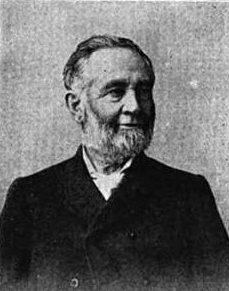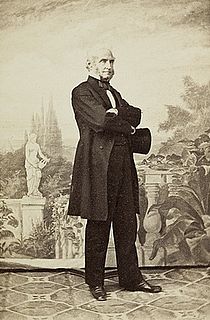
In the context of the American Civil War (1861–65), the border states were slave states that did not declare a secession from the Union and did not join the Confederacy. To their north they bordered free states of the Union and to their south they bordered Confederate slave states. Of the 34 U.S. states in 1861, nineteen were free states and fifteen were slave states. Two slave states never declared a secession or adopted an ordinance: Delaware and Maryland. Four others did not declare secession until after the Battle of Fort Sumter and were briefly considered to be border states: Arkansas, North Carolina, Tennessee and Virginia—after this, they were less frequently called "border states". Also included as a border state during the war is West Virginia, which was formed from 50 counties of Virginia and became a new state in the Union in 1863.

The Camp Jackson affair, also known as the Camp Jackson massacre, was an incident during the American Civil War that occurred on May 10, 1861, when a volunteer Union Army regiment captured a unit of secessionists at Camp Jackson, outside the city of St. Louis, in the divided slave state of Missouri.
The Price–Harney Truce was a document signed on May 21, 1861, between United States Army General William S. Harney and Missouri State Guard commander Sterling Price at the beginning of the American Civil War.

During the American Civil War, Missouri was a hotly contested border state populated by both Union and Confederate sympathizers. It sent armies, generals, and supplies to both sides, was represented with a star on both flags, maintained dual governments, and endured a bloody neighbor-against-neighbor intrastate war within the larger national war.

During the American Civil War, Arkansas was a Confederate state, though it had initially voted to remain in the Union. Following the capture of Fort Sumter in April 1861, Abraham Lincoln called for troops from every Union state to put down the rebellion, and Arkansas and several other states seceded. For the rest of the war, Arkansas played a major role in controlling the vital Mississippi River and neighboring states, including Tennessee and Missouri.
The Missouri Constitutional Convention of 1861–1863 was a constitutional convention held in the state of Missouri during the American Civil War. The convention was elected in early 1861, and voted against secession. When open fighting broke out between Pro-Confederate governor Claiborne Fox Jackson and Union authorities, and Union forces occupied the state capital, the convention formed a provisional state government, and functioned as a quasi-legislature for several years. The convention never did produce a new constitution; that task was delegated to a new convention, elected in 1864.
In the American Civil War the Home Guard or Home Guards were local militia raised from Union loyalists.

Odon Guitar was a general in the Union Missouri State Militia during the American Civil War. He was noted for his successful campaign against Joseph C. Porter and John A. Poindexter's recruiting commands in northern Missouri.

The Battle of Moore's Mill was an American Civil War battle that took place in Central Missouri on July 28, 1862 along Auxvasse Creek near modern-day Calwood. This engagement, the Battle of Kirksville a week later, and the Battle of Compton's Ferry would drive the main Southern recruiters from northern Missouri. The Moore's Mill Battlefield was added to the National Register of Historic Places in 2015.
The Missouri Volunteer Militia (MVM) was the state militia organization of Missouri, before the formation of the Missouri State Guard in the American Civil War.
The Provisional Government of Missouri was established on August 1, 1861 by the members of the Missouri Constitutional Convention after the evacuation of Missouri's pro-Secessionist Governor Clairborne Fox Jackson and elements of the Legislature to the southern part of the state. The Missouri State Convention, acting under authorities granted to it by the special election earlier that year, declared the office of Governor vacant, and appointed former Missouri Supreme Court Justice Hamilton Gamble Governor. Even opponents of Federal action in Missouri generally respected Gamble.
The Minutemen was a secessionist paramilitary organization in St. Louis, Missouri in the early months of 1861. Many members joined the 2nd Regiment of the Missouri Volunteer Militia, and after May 10, 1861 the Missouri State Guard or the Confederate States Army.

The Netwon's 10th Arkansas Cavalry Regiment (1864–1865) was a Confederate Army Cavalry regiment during the American Civil War. The unit was originally organized from volunteer companies raised from the Arkansas State Militia in the Southern Arkansas Counties in the winter of 1863–1864 after the fall of Little Rock. It was originally organized as Pettus Battalion, Arkansas State Troops but was later enrolled in Confederal Service and Robert Crittenden Newton was elected Colonel.

The 1st Battalion, Arkansas State Troops (1863–1864) was an Arkansas State Cavalry battalion during the American Civil War. The unit is also some times referred to as Pettus' Battalion or Trader's Battalion, Arkansas State Troops. The unit was eventually consolidated with other units in late 1864 to form the Newton's 10th Arkansas Cavalry Regiment.
The 2nd Missouri Volunteers evolved from one of several unofficial pro-Unionist militia units formed semi-secretly in St. Louis in the early months of 1861 by Congressman Francis Preston Blair, Jr. and other Unionist activists. The organization that would become the Second Missouri was largely composed of ethnic Germans, who were generally opposed to slavery and strongly supportive of the Unionist cause. Although initially without any official standing, beginning on April 22, 1861, four militia regiments Blair helped organize were sworn into Federal service at the St. Louis Arsenal by Captain John Schofield acting on the authority of President Lincoln.

The Oregon State Defense Force (ORSDF) is the official state defense force of Oregon and one of the three components of Oregon State's organized militia, with Oregon's Army and Air National Guard (ORNG) making up the other two. It serves as a state-level military and emergency services reserve force.















